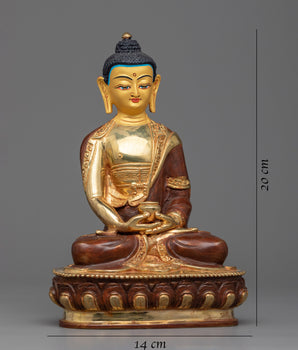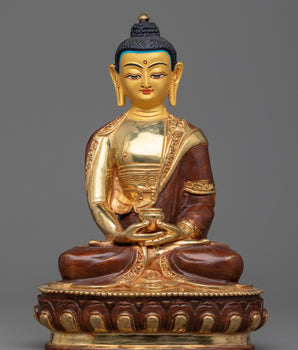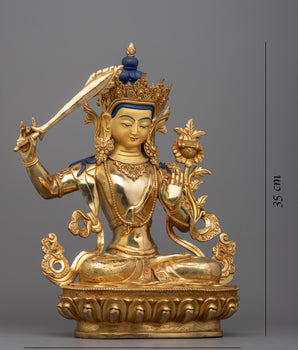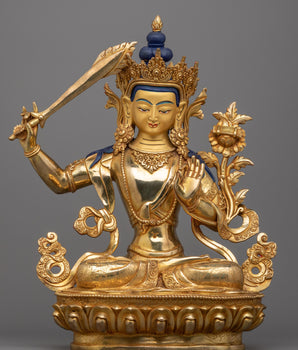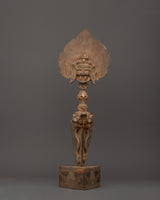
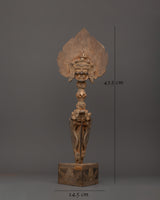

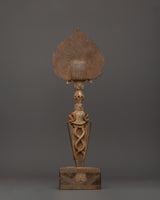
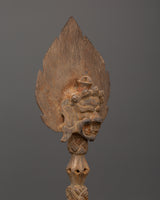


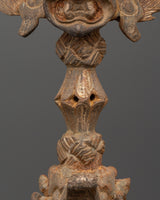
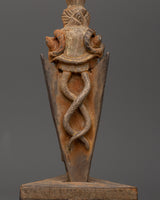


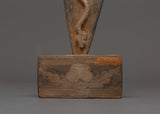
Handcrafted Tibetan Phurba Dagger | Sacred Ritual Tool

100% AUTHENTIC

HANDMADE

FREE SHIPPING
Handcrafted Tibetan Phurba Dagger | Sacred Ritual Tool for Purification & Protection
--------------------------------------------
Size: 43.5cm (Height) x 14.5cm (Width)
Weight: 2.34kg
Materials: Iron body, Silver Inlaid
--------------------------------------------
About The Ritual Item :
This handcrafted Tibetan Phurba Dagger is a potent spiritual implement used in Tibetan Buddhist rituals to cleanse, change, and protect. This sacred dagger, made of iron and flawlessly inlaid with silver, carries great symbolic importance. The Phurba, which monks and practitioners commonly employ, is thought to remove bad energies, suppress evil forces, and anchor spiritual goals during ceremonies. This dagger's elaborate design and outstanding craftsmanship exude strength and spiritual energy. It stands 43.5cm tall and 14.5cm wide, making it an eye-catching centerpiece for any altar or sacred place.
The Phurba, a sign of change and wisdom, depicts the unification of the three realms: earth, sky, and underworld, and is associated with powerful protecting deities. The sharp triple-bladed form pierces spiritual barriers, making it an indispensable instrument in Vajrayana practice. Whether used in ritual, as a meditation aid, or as a one-of-a-kind piece of Tibetan spiritual art, this dagger exudes presence and purpose. Its profound symbolism and artisan craftsmanship make it an essential acquisition for collectors, spiritual practitioners, and everyone interested in Tibet's rich Buddhist culture.
Introduction To The Phurba :
The ceremonial dagger (Sanskrit: Kila; Tibetan: phurba) is essential for expelling evil and is considered especially effective in neutralizing the forces obstructing Tantric Buddhist practice. It has ancient origins, first appearing in the Indian Rig Veda as the core blade of the vajra used by Indra to destroy the primordial cosmic snake Vritra. Kila, a peg or stake in Sanskrit, was most likely associated with Vedic sacrifices. Meditation on the Vajrakila Tantra, an early Indian scripture first promoted in Tibet in the eighth century by Padmasambhava, one of the founding teachers of Tibetan Buddhism, is used to invoke the three-headed Vajrakila Buddha.
How to set up your own Buddhist Shrine?
Find a clean, quiet, and uncluttered spot
Set up an altar table, and cover it with an altar cloth that calls to you
Place your sacred item (statue, thangka, or a picture of Buddha) at the center

















